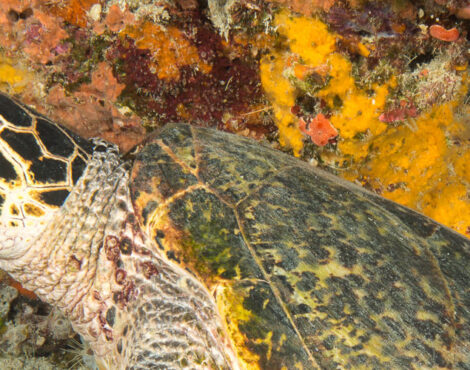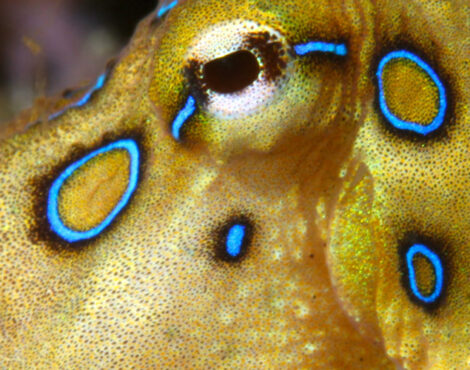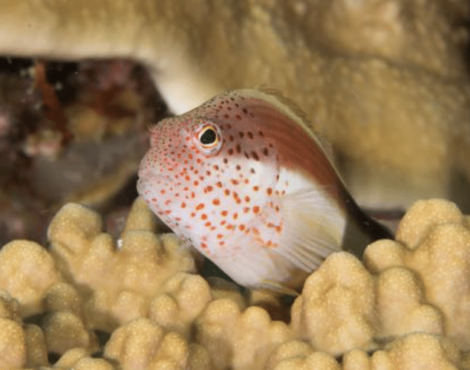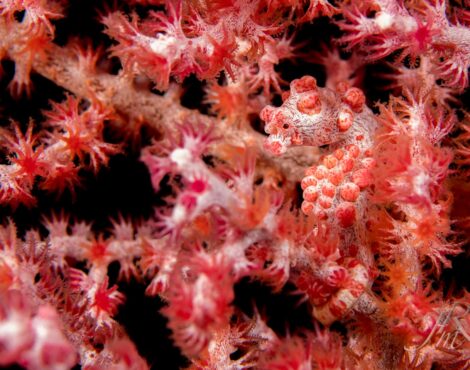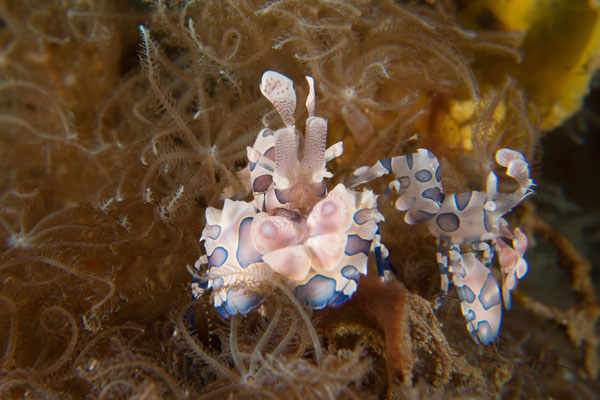
For our latest marine blog, we will be focussing on one of the most flamboyant, interesting, and rarest crustaceans that grace the waters of Bunaken Marine Park.
With psychedelic spots and unusual (perhaps slightly cruel) dietary habits, we can only be talking about the Harlequin Shrimp.
What are Harlequin Shrimp?
Scientifically known as Hymenocera picta, the harlequin shrimp is a coral reef-dwelling shrimp that can be found across parts of the Indian and Pacific Oceans.
They are usually considered the only species of the genus Hymenocra, however Harlequin Shrimp are sometimes split into two species: H. pictaâ from the central and east Pacific, and H. elegans â from the west Pacific and Indian Ocean. There is no real difference between the two, except minor colouration differences.
What does a Harlequin Shrimp look like?
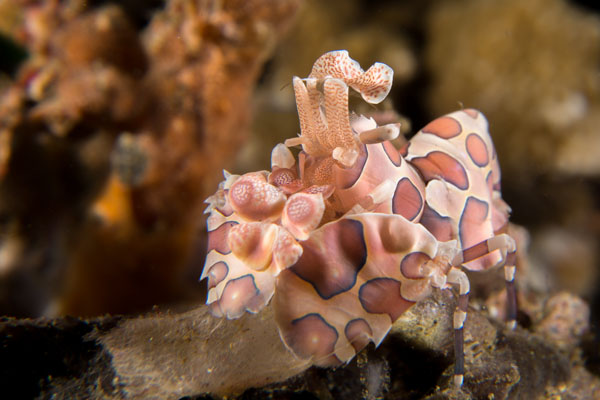
There is a reason Harlequin Shrimp appear so high on many divers bucket lists â because they are extremely beautiful.
They are relatively small shrimp, with a maximum size of around 5cm for the female, and a little smaller for the male. They are almost always found in pairs, so you can compare the sizes for yourself when you see them!
The body is cream coloured with occasional contrasting spots. In the Indian Ocean, these spots tend to be a browny-purple colour, with a bright blue edge. They have two pairs of âwalking legsâ and oversized chelipeds â the front pair of legs that also function as claws.
What do Harlequin Shrimp eat?
 Not only is the Harlequin Shrimp a real beauty to look at, they are serious contestants for the âMost Interesting Shrimp in the Worldâ Award (if it exists, that is). They have a very specific diet, and they are voracious predators â devouring prey much, much larger than themselves.
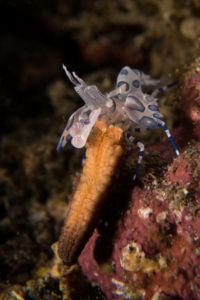 Their only source of nourishment is from eating starfish. They seem to prefer the slower moving species, but they will happily eat any type they can get their claws on. Despite their small size, they are capable of eating starfish that reach well over 30cm.
Their only source of nourishment is from eating starfish. They seem to prefer the slower moving species, but they will happily eat any type they can get their claws on. Despite their small size, they are capable of eating starfish that reach well over 30cm.
They live in pairs not only for mating but for eating too. Working together, they use their large claws to flip the starfish on its back. Once it is overturned, the Harlequin Shrimp will gnaw away at the starfishâs tube feet and soft tissues until they reach the central disk. The Harlequin Shrimp can use their large claws to manoeuvre the starfish into whatever position makes it easier to eat.
In an attempt to save its life, the starfish may shed the arm that is under attack, however for the smaller species it is often too late, and the shrimp will finish the job faster than the starfish can escape. This can still take over a day, as starfish are no marathon runners themselves â especially when they have just voluntarily given up one of their arms.
What makes Harlequin Shrimp so interesting and important for the coral reefs is that they are one of the only predators of the coral-eating crown of thorns starfish. Although these destructive starfish can grow up to 40 cm, a pair of Harlequin Shrimp can devour one in just a few days.
They have also been spotted eating sea urchins too, however, this is very unusual behaviour, and it is only believed to happen is they are very hungry.
Are Harlequin Shrimp under threat?
There is very little data about the abundance of Harlequin Shrimp, however, there are some things that could threaten their survival.
They are very sensitive to changes in water temperature, PH level, salinity, and nitrite levels, so naturally, ocean acidification and climate change could have severe consequences for them. Even a heavy monsoon could alter the water salinity too much in coastal regions, making it impossible for them to survive there.
Where can I see a Harlequin Shrimp?
Harlequin Shrimp live anywhere below the intertidal zone on coral reefs â they have even been spotted by snorkellers directly in front of Siladen Resort, although this was an amazing find, and not something one should expect.
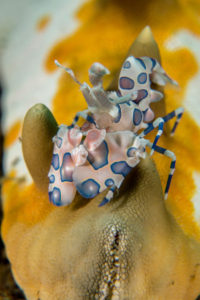 Â As their favourite pastime is eating starfish, the best place to look for them is where there are lots of starfish. For us, that is the North Sulawesi mainland, at dive sites such as Bolung or Tiwoho, which have a combination of sand and corals â and lots of chocolate chip starfish.
 As their favourite pastime is eating starfish, the best place to look for them is where there are lots of starfish. For us, that is the North Sulawesi mainland, at dive sites such as Bolung or Tiwoho, which have a combination of sand and corals â and lots of chocolate chip starfish.
Sadly, sightings are few and far between. Harlequin Shrimp sightings are rare throughout almost their entire range, and once spotted, they are usually gone the next time we visit â they are constantly on the move looking for their next meal. That doesnât mean you won’t see one, as we have had several sightings over the past few years, and usually in the dive sites mentioned above.
You just need a lot of luck on your side, and an eagle-eyed dive guide, which we are always happy to provide.


